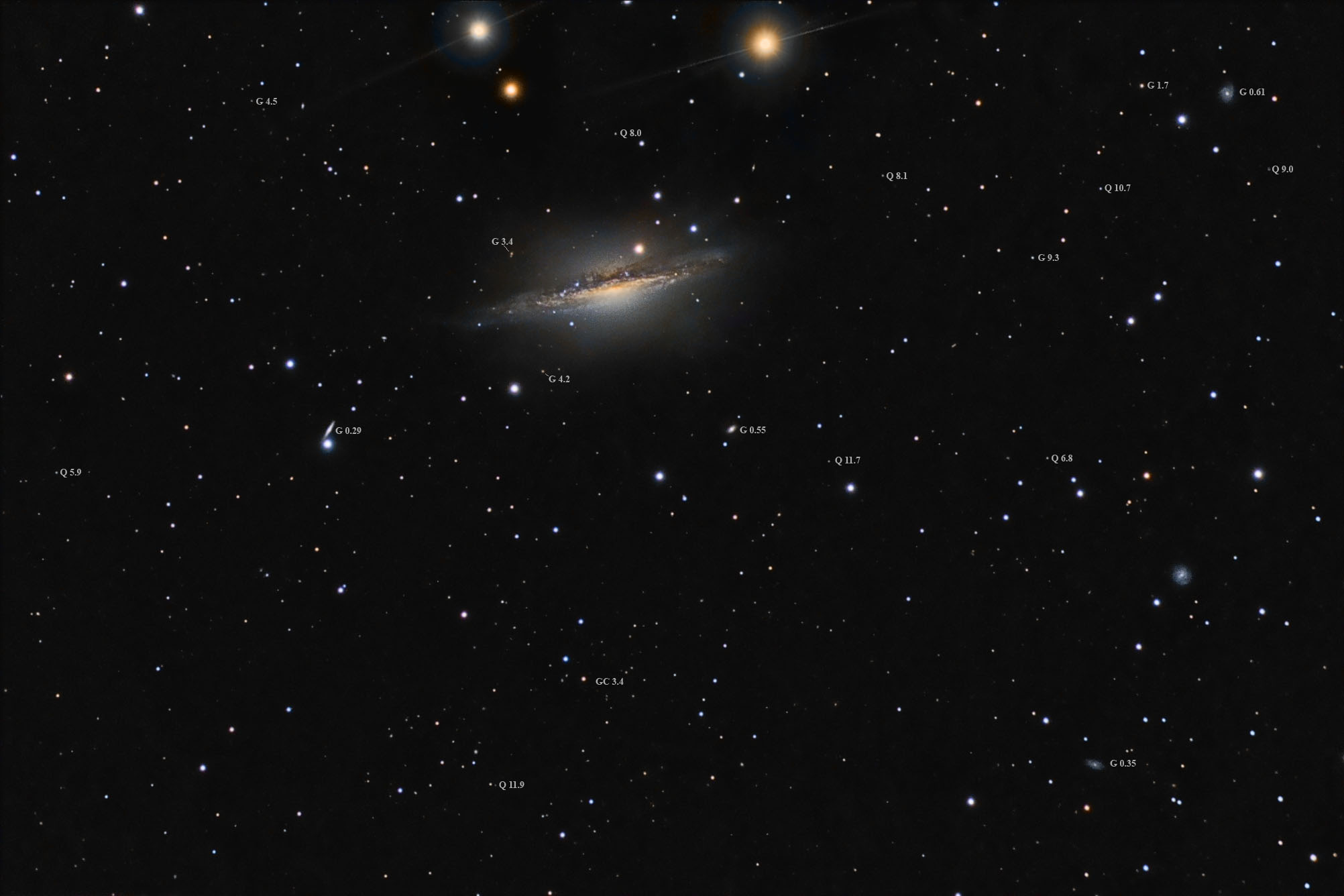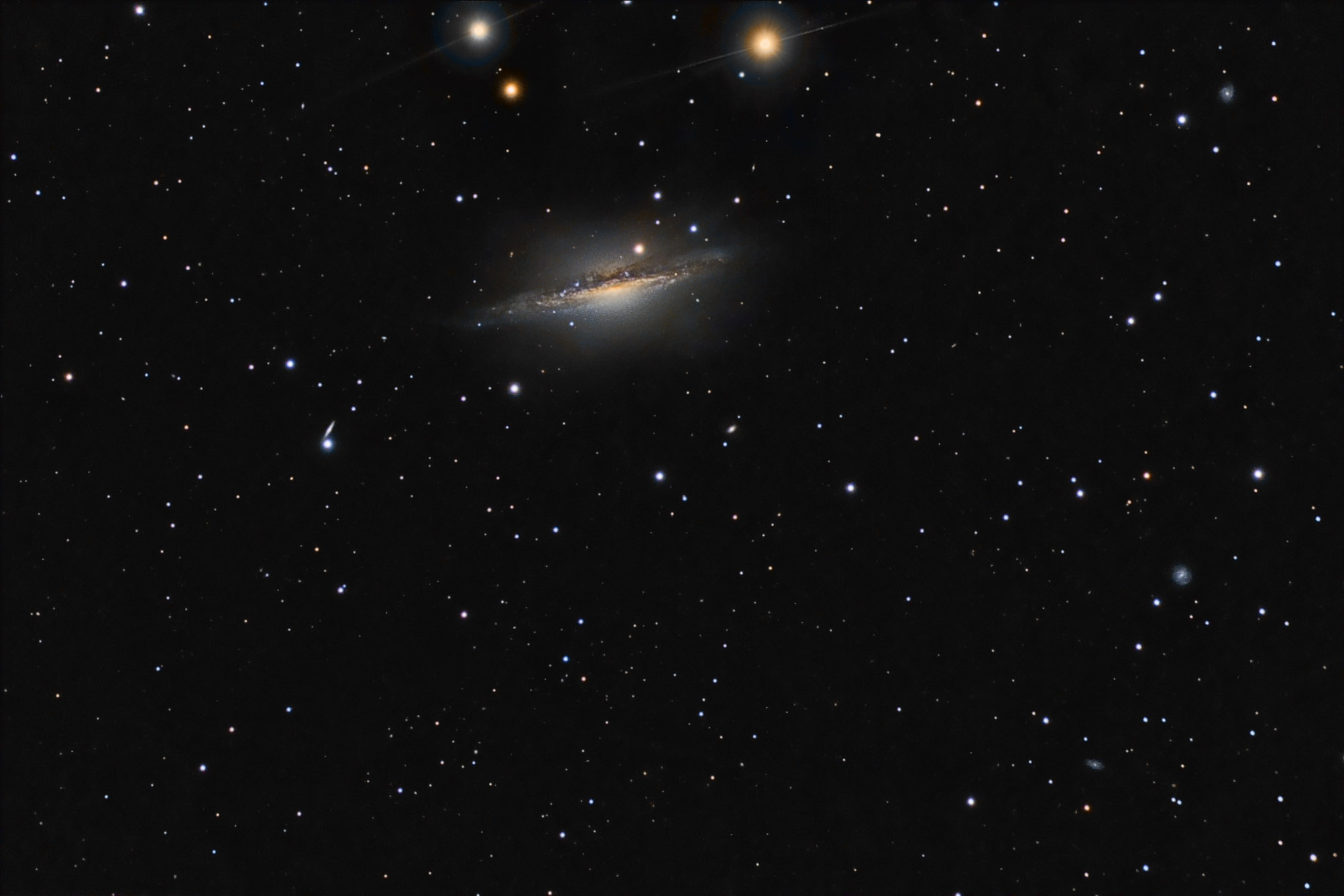| Description | Images |
Object name: NGC1055Designation(s): NGC1055, NGC 1055 is a member of the M77 (NGC 1068) group. At first glance, it appears much like an ordinary near edge-on spiral galaxy. But if you stretch the image as I've done you notice two obvious features that aren't common. The first is a tight pair of parallel linear dust lanes going NW from the core of the galaxy and thus at an angle to the plane of the galaxy as defined by its massive dust lane. The other, is its halo. Instead of being round as most are or square as is sometimes seen in galaxies with a "small" black hole and thus not very massive halo. the halo of NGC 1055 seems to have gone beyond square to a four pole shape, a square that is pinched in on all four sides. The argument that all isn't normal gets stronger when viewed at other frequencies than visible light. It is strong in radio, especially HI and CO bands, it is a strong IR emitter as well indicating strong star birth hidden behind a thick curtain of dust. Its spectrum shows it to be both a Seyfert 2 and LINER 2 galaxy, both indications of a recent encounter that has stirred up star formation and is providing food for its core's black hole. Many bright blue star clusters stand out against its dark dust lanes. These must contain a great number of very short-lived supermassive stars. Yet another indication of something triggering unusually strong star formation in this galaxy. Related Designation(s):2MASS J02414522+0026359, 2MASX J02414523+0026354, 2MFGC 02138, 87GB 023910.2+001306, 87GB[BWE91] 0239+0013, AKARI J0241452+002639, APMUKS(BJ) B023911.27+001344.9, CGCG 0239.1+0013, CGCG 388-095, HDCE 0163 NED001, HIPASS J0241+00, HIPEQ J0241+00, IRAS 02391+0013, IRAS F02391+0013, LDCE 0174 NED005, LGG 073:[G93] 001, MCG +00-07-081, MG1 J024147+0027, NGC 1055, NGC1055, NSA 007419, NVSS J024145+002638, PGC 010208, PKS 0239+002, PKS B0239+002, PKS J0241+0026, PMN J0241+0026, SDSS J024144.78+002642.4, SDSS J024145.22+002635.4, UGC 02173, USGC U143 NED03, UZC J024145.4+002635, [M98j] 041 NED06, [RHM2006] SFGs 023, [WB92] 0239+0013, |

